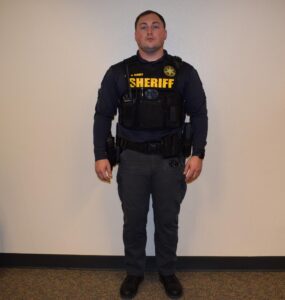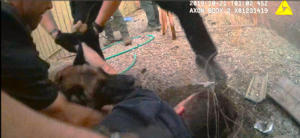SIL Has Two Police Excessive Force Cases On Appeal With Ninth Circuit
SIL Has Two Police Excessive Force Cases On Appeal With Ninth Circuit
The attorneys at Scottsdale Injury Lawyers currently have two appeals pending before the Ninth Circuit. Both cases involve police excessive force. Both appeals ask for review of lower court decisions where the grant or denial of qualified immunity was an issue.
The Federal Court System Where 1983 Police Brutality Cases are Brought
The federal court system is a three-tier system. The first tier is comprised of the trial courts. These are called the district courts and there are currently 94 district courts. The 94 district courts are divided into 13 judicial districts called circuits.
The second tier includes the appellate courts. Each judicial circuit has a court of appeals. Rulings from the district courts can be appealed as of right to the applicable circuit’s court of appeals. This means that the circuit courts must consider all appeals properly presented to them.
Arizona’s district courts are in the Ninth Circuit. The Ninth Circuit Court of Appeals is the largest in the country. It currently has 29 judges and considers the appeals for all district courts in the following states:
- Alaska
- Arizona
- California
- Hawaii
- Idaho
- Montana
- Nevada
- Oregon
- Washington
The United States Supreme Court Can Consider Police Brutality Cases by Request
The third tier of the federal court system is the United States Supreme Court. This is the highest court in the country. There is no appeal as of right to the Supreme Court. Appeals to the Supreme Court must be requested by a special petition.
The Supreme Court only considers matters that are of great public importance. Typically, it only considers cases where the decision will resolve a split between the circuits or when the decision will greatly shape the laws of the United States. The Supreme Court only considers a limited number of cases per year. As such, it turns downs most appeals requested.

Some important police brutality cases have been decided by the United States Supreme Court. The decisions issued by the Supreme Court are binding on the circuit courts. As a result, the circuit courts are bound to follow the decisions of the Supreme Court and its decisions become “the law of the land.”
The Most Important Police Excessive Force Decision Issued by the Supreme Court
The most important Supreme Court decision involving police excessive force is Graham v. Connor. The case was decided in 1989 and is the controlling case for all circuits regarding the factors to be considered in determining if excessive force was used by police. The decision held that excessive force was to be analyzed under the Fourth Amendment by applying a “reasonableness” standard to the force used.
The Supreme Court went on to instruct that the reasonableness of the force used by police must be analyzed on a case specific basis. As such, the facts and circumstances of each case would be different. The factors the Supreme Court noted of importance included:
- The severity of the crime at issue.
- Whether the suspect posed an immediate risk to the safety of the officer or public.
- Whether the suspect was trying to evade arrest by flight.
The decision clarified that the reasonableness inquiry was an objective one without regard to the officer’s underlying intent or motivation. In other words, based on the facts and circumstances would a similarly situated reasonable officer have used the same amount of force. Graham v. Connor is so important that all police officers are trained in it and taught it at the police academy.
Why Ninth Circuit Court of Appeals Decisions Are Important in Police Brutality Cases
The decisions issued by the Ninth Circuit Court of Appeals create binding law on all the district courts in the circuit. This means that its decisions control how officers must act and the laws police officers must follow in Arizona and the other states in the circuit. The decisions from the Ninth Circuit shape how officers must conduct themselves and set forth what is considered legal and illegal uses of force.
The decisions from the Ninth Circuit shape how officers must conduct themselves and set forth what is considered legal and illegal uses of force.
The decisions also put the officers on notice of what conduct is unconstitutional. For example, if a case states that it is unconstitutional and excessive to taser an unresisting suspect in handcuffs, an officer that does so later should then know that he is violating the law. The officer can then be held responsible for police brutality in a police excessive force lawsuit.
The First Appeal Involves an Officer Involved Shooting
Our police brutality lawyers appealed a decision issued by the Arizona district court on September 14, 2023. The district court issued a decision in favor of police officers with respect to the killing of a mentally distraught man in Mohave County. The district court’s decision only disposed of the federal civil rights claims. The state law claims are now pending in state court.
The Introduction to the First Appeal Describing the Facts of the Case
This month, we filed our opening brief on appeal. The introduction stated as follows:
This action arose from the deadly shooting of Bradley Rose by Deputy Matthew Farney of the Mohave County Sheriff’s Office (“MCSO”). Around 9:00 p.m. on April 17, 2021, Bradley suffered a mental health crisis while driving from his sister’s home to his girlfriend’s residence. Mohave County Deputy Sheriffs, Defendants Cardenas, Farney, Godfrey and Shrader, began to pursue Bradley, who was driving in an unpredictable manner. The deputies followed Bradley at a low rate of speed until Bradley arrived and parked at the home of his girlfriend.

Farney arrived immediately behind Bradley, with the other deputies only seconds away. Farney watched as Bradley turned around and stared at him with a blank look in his eyes. It was apparent to Farney that Bradley was unarmed, was not attempting to flee and could not appreciate the circumstances or his surroundings.
Without utilizing the assistance of the other deputies, Farney exited his vehicle, unholstered and pointed his firearm at Bradley, and immediately ran toward him. Farney charged at Bradley without asking any questions or giving any commands. Within seconds of arriving at the scene, Farney went hands on with Bradley, who, in his confused state, struck Farney one time. However, Farney was able to quickly disengage to a safe distance.
After Farney disengaged, Godfrey and Shrader were at the scene. Farney did not enlist their help. Neither did Farney utilize less lethal force options, such as his Taser or baton. Instead, Farney raised his gun and fired at Bradley, without warning, striking him four times. Bradley stumbled a few feet toward his girlfriend’s residence before falling to the ground.
Godfrey and Shrader were out of their vehicles and watched as Bradley collapsed. Instead of running for a first aid kit or immediately applying pressure to Bradley’s gunshot wounds, Shrader held Bradley at gunpoint while Godfrey applied handcuffs. All four deputies, knowing that Bradley posed no threat, allowed him to remain handcuffed for nearly 17 minutes as he bled to death. Bradley was pronounced dead shortly after 10:00 p.m. that same night from multiple gunshot wounds to the chest.
The Portion of the Appeal Brief Describing the District Court Lawsuit and Issues on Appeal
The appeal brief we filed set forth the below verbatim. This summarizes the case and issues on appeal.
This lawsuit was brought under 42 U.S.C. § 1983 by Bradley’s father, Michael Rose, as personal representative for the estate of Bradley Rose. Plaintiff contends that the use of deadly force and seventeen-minute handcuffing deprived Bradley of his Fourth Amendment right to be free from the use of excessive force. Also, that the killing of Bradley deprived Bradley’s parents of their familial relationship with their son, as protected by the First and Fourteenth Amendments. Plaintiff contends further that Sheriff Schuster is liable in his individual capacity as a supervisory defendant based on the failure to train Farney in the use of deadly force.

On September 14, 2023, the district court entered an order granting summary judgment on grounds of qualified immunity to all Defendants on all federal claims. By the same order, the district court denied Plaintiff’s motion seeking leave to amend the Complaint to add a Monell claim against Mohave County and a state law negligent training claim against Sheriff Schuster based on training deficiencies. The district court declined to exercise supplemental jurisdiction over the related state law claims, and this appeal followed.
The Second Appeal Involves Excessive Force With a Police Dog
The other appeal our police brutality lawyers are handling involves excessive force by way of a police K9. A Goodyear police officer released a police K9 on our client when it was not needed and allowed the K9 to bite the client for an excessive amount of time. The other officers failed to intervene or stop the use of force.
The district court issued a decision holding that the officer’s decision to release the dog was not a constitutional violation. The district court also held that the other officers’ failure to stop the dog bite were not violations either. However, the district court correctly decided that whether or not the officer’s decision to allow the dog to remain biting the client could be a constitutional violation.

The district court held that the duration of the bite could be excessive and unreasonable. As such, it was a matter for a jury to decide. The officer appealed that decision to the Ninth Circuit. Our attorneys cross-appealed the district court’s decision that the release of the dog was not unconstitutional and that the other officers could not be held liable for failing to stop it.
Contact Our Arizona Police Brutality Lawyers to Handle Your Excessive Force Case
Contact our office today if you or a loved one were the victim of police brutality or police excessive force. Our civil rights lawyers have extensive experience handling police misconduct cases. We have obtained six and seven figure results in civil rights cases throughout Arizona.
Our attorneys are elite and specialize in this area. We even handle the appeals when needed. A consultation is free and we only charge a fee if we recover for you.
About the author: The content on this page was provided by Scottsdale personal injury attorney and civil rights lawyer Tony Piccuta. Piccuta graduated with honors from Indiana University-Maurer School of Law in Bloomington, Indiana (Previously Ranked Top 35 US News & World Report). Piccuta took and passed the State bars of Arizona, California, Illinois and Nevada (all on the first try). He actively practices throughout Arizona and California. He is a trial attorney that regularly handles serious personal injury cases and civil rights lawsuits. He has obtained six and seven figure verdicts in both state and federal court. He has been recognized by Super Lawyers for six years straight. He is a member of the Arizona Association of Justice, Maricopa County Bar Association, Scottsdale Bar Association, American Association for Justice, National Police Accountability Project and Consumer Attorneys of California, among other organizations.
Disclaimer: The information on this web site is for informational purposes only and does not constitute legal advice. The information on this page is attorney advertising. Reading and relying upon the content on this page does not create an attorney-client relationship. If you are seeking legal advice, you should contact our law firm for a free consultation and to discuss your specific case and issues.
References:
[1] https://www.uscourts.gov/faqs-court-information
[2] https://www.ca9.uscourts.gov/judicial-council/what-is-the-ninth-circuit/
[3] https://scholar.google.com/scholar_case?case=4306215806680760770&q=Graham+v.+Connor&hl=en&as_sdt=806
[4] https://scholar.google.com/scholar_case?case=5843997099226288287&q=Graham+v.+Connor&hl=en&as_sdt=806

